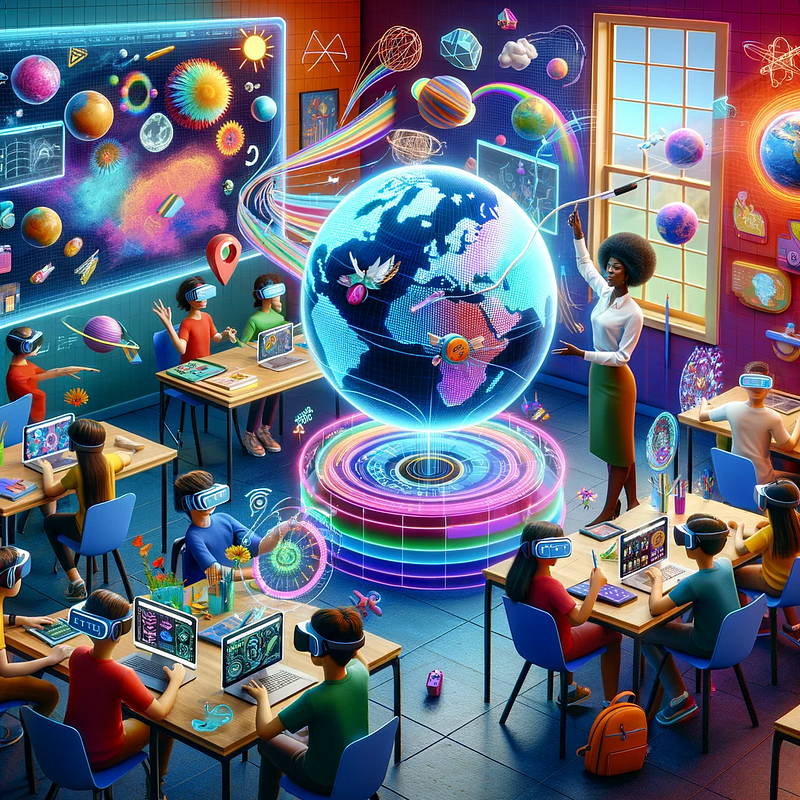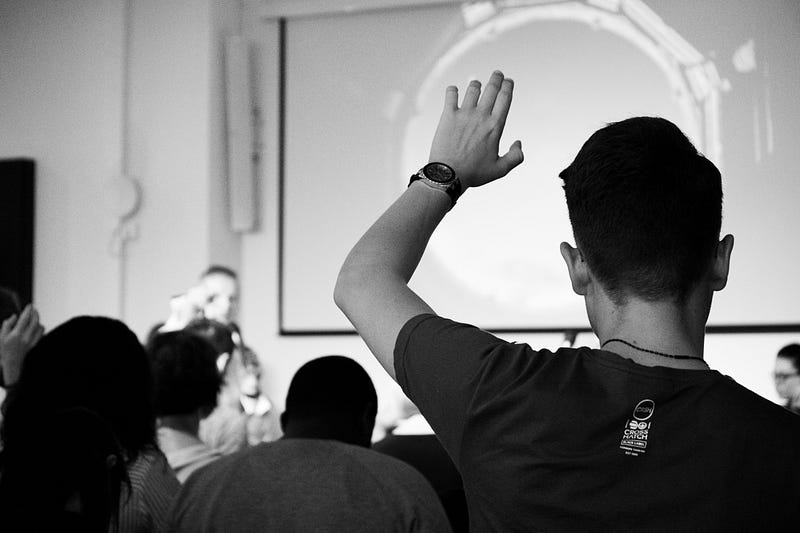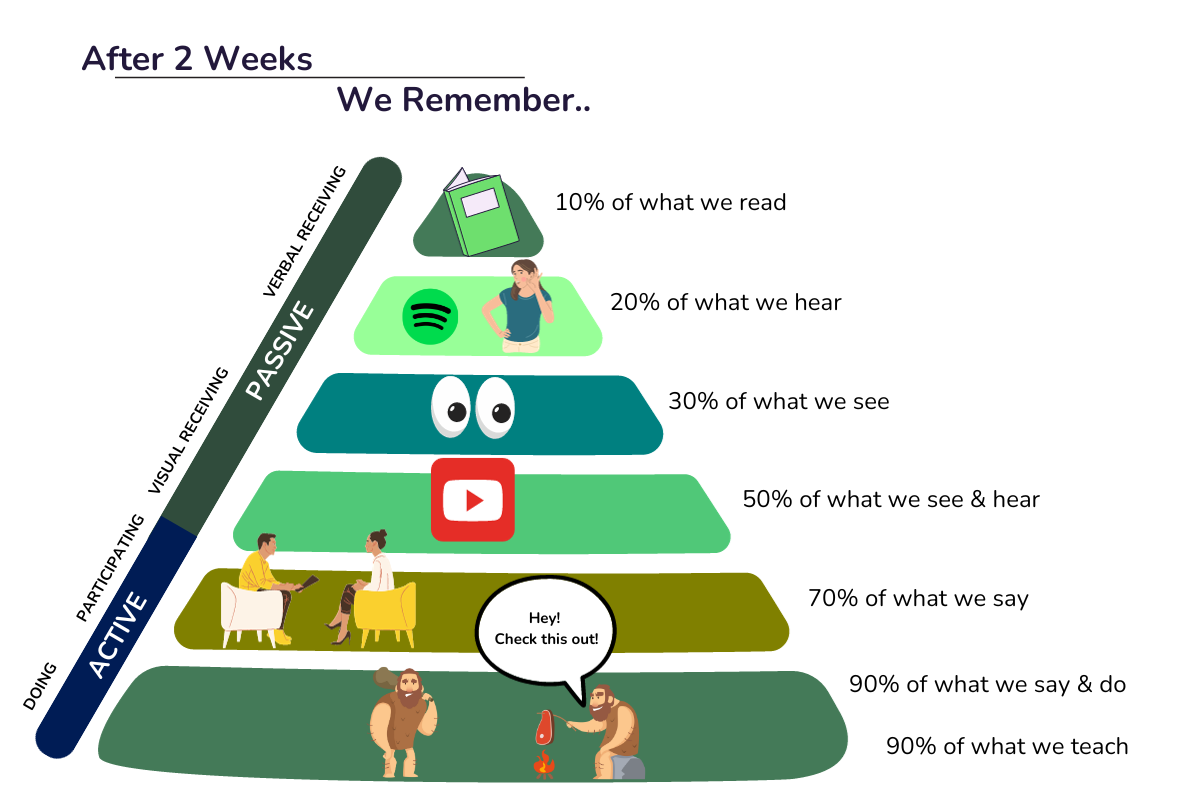What is “Blended Learning” in 2024?

What is “Blended Learning” in 2024?
Techniques Every Educator Needs to Know
“The future of education is here, and it’s blended”.
Such is the chorus resonating within educational circles as we head into 2024.
Blended learning, also known as hybrid learning, mixes online teaching tools with regular classroom activities. Over time, this mix has given teachers new ways to catch students’ interest, improve education, and get better results.
However, the narrative of Blended Learning has shifted.

It’s no longer just about merging the old with the new — Blended Learning is morphing into an absolute dynamo for educators, arming them with innovative, adaptive techniques to craft deeply immersive and cohesive learning environments and experiences.
Merely a mix no more! Blended Learning has evolved into a strategic approach to deliver high-quality, engaging training — both locally and at scale.
The Challenge of Self-Paced Learning
While the digital age has ushered in a plethora of platforms offering self-paced courses, data paints a sobering picture of their efficacy.
Research from institutions like MIT highlights a startling drop in completion rates for MOOCs (Massive Open Online Courses); the numbers reveal that from 2013 to 2018, the average completion rate dwindled to a mere 3%, with less than half of the enrollees venturing beyond the initial lecture.
Even platforms like Udemy, renowned for its vast array of courses and expert instructors, struggle with an average completion rate of 8% from their top educators.
The Power of Cohort-based Learning
Contrary to the diminishing success of self-paced courses — cohort-based learning — where a group of students progress through a curriculum together, stands out as a beacon of effectiveness in the digital educational realm.
This approach often yields completion rates soaring above 90%.
Why such a drastic difference?
It’s simple: people like to learn with others.
Learning alone online often doesn’t work because we need to talk and work with people to really understand new ideas, and the lack of social engagement has been identified as a major barrier to online learning success.
Cohort-based learning, at its heart, emulates the traditional classroom environment — but within a vibrant virtual setting, ideally drawing on the very best of both to create a scenario where 1+1=3.
Cohort-based learning, at its heart, emulates the traditional classroom environment — but within a vibrant virtual setting, ideally drawing on the very best of both to create a scenario where 1+1=3.
Shifting from Passive to Active Learning
Embracing the shift from passive to active learning has become the bedrock of modern blended learning. Traditional lecture-focused methods largely depend on students passively absorbing content through reading or listening. However, studies have consistently shown that these passive approaches result in lower retention rates.
In contrast, active learning methods, particularly project-based learning, position students as proactive participants; rather than being mere sponges, they actively apply, experiment, and refine their knowledge.
[...] active learning methods, particularly project-based learning, position students as proactive participants; rather than being mere sponges, they actively apply, experiment, and refine their knowledge.

The potency of this approach becomes evident when we consider that students remember up to 90% of what they say and do, especially when they engage in experiential learning or present their findings.
By merging project-based learning with cohort interactions, educators can tap into both the “doing” and “participating” facets of learning, potentially achieving unparalleled retention and engagement levels.
Getting Practical — A Blended Blueprint
Putting Blended Learning into practice in today’s educational landscape requires an amalgamation of tried-and-tested methods alongside new-age technological tools.
Some great techniques include:
- Flipped Classroom and Rotation Models: Please follow the links to dive deeper — these approaches ensure that students engage with content at their own pace while reserving classroom time for deeper, teacher-guided exploration. The Rotation Model, with its variants such as Station Rotation, offers flexibility and variation to keep learners engaged.
- Harnessing AI for Personalization: Quite recently AI has ushered in vastly more accessible modes for hyper-personalized learning. Dynamic learning paths, instant feedback mechanisms — like AI “coaches” — and learner profiling allow educators to cater to individual student needs like never before, tools like ChatGPT offer dynamic responses, helping to customize the learning material effectively to the individual. But AI in Blended Learning could be an entire article in itself — it is highly recommended to stay on top of what’s happening here as this will likely be the biggest mover-and-shaker in 2024.
- VR/AR in Education: Virtual and Augmented reality offers unparalleled immersive experiences and simulations. Be it a historical reenactment, a journey through the human body, or a virtual field trip to an international museum, these technologies break down the walls of traditional classrooms. Though the technology is still relatively young — you usually have to be somewhat tech-savvy to build your own experiences — this is changing very fast; definitely one to keep an eye on.
- Gamified Learning Platforms: to enhance in-person sessions, many educators are now making use of tools like Slido, Kahoot and Mentimeter. These platforms infuse traditional learning with elements of play and competition. By turning quizzes, polls, or lessons into engaging real-time games, students are more motivated to participate and retain the information; instant feedback and leaderboards often fuel a healthy competitive spirit, further driving engagement.
- Project-Based Blended Learning: Merging online resources with hands-on projects ensures students get hands-on, practical exposure — not only absorbing information but actively applying it — meaning, if you look at the above pyramid, that they will retain more of it. The real magic lies in its adaptability: educators can tailor projects to fit diverse learning levels and interests, shifting and evolving to always meet students where they are while challenging them to grow.
- Adaptive Learning Techniques: Combining classic strategies with cutting-edge tech, adaptive learning tailors content to each student. Platforms using Active Recall elicit information retrieval from memory. When this is combined with Spaced Repetition, which adjusts review intervals based on performance, the result is a potent adaptive learning duo. Tools such as Anki, Quizlet, and Beeline harness these principles. By integrating algorithms with AI chatbots like OpenAI’s ChatGPT, educators can now offer unprecedented personalized learning experiences at scale.
Embracing a Blended Future of Learning
As we chart our course towards 2024, it’s evident that the traditional boundaries of education are continuously expanding and redefining themselves. Blended Learning, once a novel concept, has matured into a robust methodology that ingeniously combines the virtual with the real, from the utilization of AI and VR/AR — to the power of cohort-based and project-based learning, the avenues are manifold and teeming with potential.
But as with all tools and methodologies, the true value of blended learning lies not just in its components but in how educators harness them to shape enriched learner-centric experiences.
So, as you stand on the precipice of this brave new world of education, ask yourself: How can I blend these strategies to create the most compelling, immersive, and effective learning journeys for my students?
How can I blend these strategies to create the most compelling, immersive, and effective learning journeys for my students?
Please share your experiences, successes, and challenges with blended learning in the comments below — would love to discuss them with you!
At Beeline, we are building a community where ideas cross-pollinate, and the future of education is not just predicted, but collaboratively crafted.
Weld this to your inbox & spark your creativity

If this vision resonates with you and you are wondering where to begin, I encourage you to reach out directly to us at Beeline. We are an innovative Knowledge Community and Academy Platform — for the future! Let’s discuss how we can adapt and grow together in this transformative era!
If you like my writing, subscribe to my list to receive occasional emails about whatever I am digging into and feel will be valuable to you creatively :)